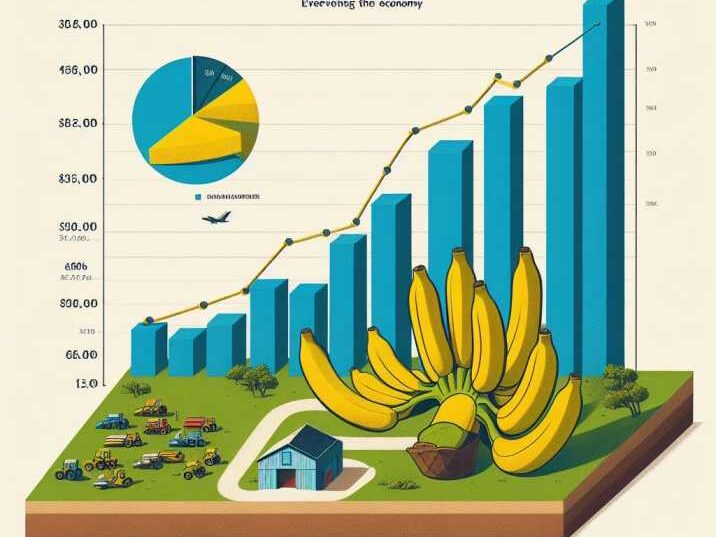Introduction:
Table of Contents
Cavendish bananas are one of the most widely consumed fruits globally, favored for their taste, convenience, and nutritional benefits. However, behind the scenes of this beloved fruit lies a complex network of social and economic implications, particularly concerning banana farming. In this article, we’ll delve into the Impact of cavendish banana farming on society and economy.

Social Implications: Community Livelihoods:
Cavendish banana farming serves as a source of livelihood for many communities, providing employment opportunities for farm workers and supporting local economies. However, the reliance on banana farming can also lead to vulnerability, as communities become heavily dependent on a single crop for sustenance.
Health and Safety Concerns:
Farm workers involved in banana cultivation may face health and safety risks due to exposure to pesticides and harsh working conditions. Ensuring safe working environments and proper protective measures is crucial to mitigating these risks and safeguarding the well-being of workers.
Environmental Impact of Cavendish Banana Farming:
Intensive banana farming practices can have adverse effects on the environment, including deforestation, soil degradation, and water pollution. Sustainable farming methods and responsible land management are essential for minimizing environmental degradation and preserving biodiversity in banana-growing regions.
Economic Implications: Export Revenue:
Banana exports contribute significantly to the economy of countries involved in banana production, including the USA. The export of Cavendish bananas generates revenue and foreign exchange earnings, supporting economic growth and development.
Market Dynamics:
The banana industry is subject to fluctuations in market demand and price volatility, impacting the income of smallholder farmers and exporters. Factors such as weather conditions, trade policies, and competition influence market dynamics and profitability within the industry.

Employment Opportunities:
Banana farming creates employment opportunities along the supply chain, from farm laborers to packaging and distribution workers. The industry’s labor-intensive nature provides jobs for rural populations, contributing to income generation and poverty alleviation in banana-producing regions.
Conclusion:
In conclusion, Cavendish banana farming carries significant social and economic implications that shape the lives of individuals and communities involved in the industry. While it provides livelihoods and economic opportunities, it also poses challenges related to health, safety, environmental sustainability, and market dynamics. By addressing these challenges through sustainable practices and supportive policies, we can ensure a more equitable and sustainable future for all stakeholders in the banana supply chain.
FAQs (Frequently Asked Questions):
1. What makes Cavendish bananas unique?
Cavendish bananas are prized for their sweet flavor, creamy texture, and convenience, making them a popular choice among consumers worldwide.
2. How does banana farming impact the environment?
Banana farming can lead to deforestation, soil degradation, and water pollution, particularly when intensive farming methods are employed. Adopting sustainable practices is essential for mitigating these environmental impacts.
3. What are the main challenges faced by banana farmers?
Banana farmers face challenges such as market volatility, pest and disease outbreaks, and climate change, which can affect crop yields and income.
4. How does banana farming contribute to local economies?
Banana farming creates employment opportunities and generates revenue for local communities, supporting economic growth and development.
5. What can consumers do to support sustainable banana farming?
Consumers can support sustainable banana farming by choosing certified organic or fair trade bananas, advocating for ethical labor practices, and reducing food waste.
